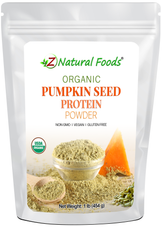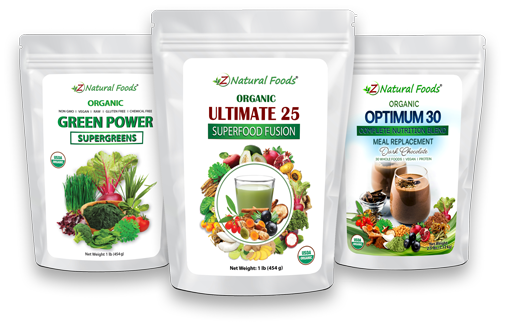Description
Description
One of the most popular topics we are asked to discuss is the various aspects of protein and how each compares within our different protein powders. Therefore, Today, we'll discuss the differences between pumpkin and rice protein.
Pumpkin Protein vs Rice Protein: What's the Difference?
Both rice and pumpkin proteins are considered incomplete proteins. Rice protein contains eight essential amino acids, and pumpkin protein contains all nine essential amino acids. Even though the average protein content in rice protein is around 80%, and pumpkin seed protein is 60-75%, many experts believe pumpkin provides a superior protein powder.
Unlock the power of organic silk brown rice protein—shop now for a healthier, stronger you!
Top 4 Fun Facts about Proteins and Amino Acids
Reviewing the basics of protein and amino acids is vital before we discuss these different protein sources in detail.
Here are some fun facts:
There are 20 different amino acids that your body needs for various functions.
- Eleven of the twenty are produced by the body, called non-essential amino acids, and we must get the other nine(called essential amino acids) from food because the body can’t produce them.
- Amino acids are organic compounds and building blocks your body uses to make protein.
- A food is considered a complete protein when it contains all nine essential amino acids in appropriate ratio amounts(Histidine, Isoleucine, Leucine, Lysine, Methionine, Phenylalanine, Threonine, Tryptophan, and Valine).
Physiology and Protein Metabolism
Here is what we know about basic physiology and protein metabolism:
- Proteins are not stored for later use.
- The body converts excess protein into glucose or triglycerides to supply energy or build energy reserves.
- When we eat a complete source of protein, the body breaks it down into amino acids to create muscle protein along with a host of other proteins in the body for enzymatic(Enzymes are essentially protein molecules)reactions.
- The nine essential amino acids also act as regulatory signaling molecules.
What is the difference between a protein powder concentrate and an isolate?
Comparing a protein isolate and concentrate comes down to what you gain versus what you lose.
- As stated above, protein powder concentrates are considered the closest end product to what nature intended to provide: a high-quality source of protein with all cofactors and constituents available for a balanced and complete source of nourishment.
- The term concentrate can be misleading as it implies that the consumer is getting a quantitatively more significant amount of protein. This is not the case. You are getting a more well-rounded end product with a greater spectrum of uses that may benefit overall well-being.
- Protein isolates are more refined products that yield a higher amount of protein with the goal of specific targeted actions and applications.
Rice Protein vs Pumpkin Protein
Both rice and pumpkin proteins are considered incomplete proteins.
Rice only contains eight of the nine essential amino acids and is low in lysine. Pumpkin protein contains all nine essential amino acids but is still considered an incomplete protein because it has insufficient threonine and lysine levels.
The average protein content in rice protein is around 80%, while in pumpkin seed protein it is 60-75%. The biological value of rice protein is 77%, and that of pumpkin seed is between 73% and 86%.
While the net protein utilization of rice protein is between 72% and 80%, no NPU has been established for pumpkin seed protein.
It is vital to keep in mind the following facts:
- It is possible for a food to be considered an incomplete protein if one or more of the essential amino acids are insufficient, even if all nine EAAs are present.
- How insufficient is defined in the above case is through the amino acid score. The score is calculated by dividing the content of individual EAAs in food protein by the content of same amino acid in the reference pattern.
With that said, the body is only concerned about having all nine essential amino acids present when creating muscle and enzyme proteins. The overall result is the same whether the protein comes from a single source of complete protein like egg and whey or combined sources to create a complete protein like plant proteins.
Therefore, combining rice or pumpkin protein with pea protein is best to create a complete protein.
While pumpkin seed and rice protein are mostly equal counterparts in the general area of protein content, pumpkin seed protein is far superior in other areas of nourishment.
With a deliciously nutty flavor, smooth texture, excellent versatility, and significant levels of magnesium, zinc, and potassium, it is both the essential fatty acid and phytonutrient department where pumpkin seed protein hits it out of the park.
The primary unsaturated fatty acid components found in pumpkin seeds are as follows.
- Palmitic 15%
- Stearic 8%
- Oleic 47%
- Linoleic 61%
Flavonoids and Phenolic acids in pumpkin seeds
Fourteen flavonoids and ten phenolic acids were identified in pumpkin seeds.
Flavonoids are a group of water-soluble polyphenolic secondary metabolites found in plants thought to provide health benefits through cell signaling (The process when a cell responds to a substance outside the cell through signaling molecules found on the surface of that cell) and antioxidant effects.

Secondary metabolites are substances manufactured by plants that make them compete in their environment, exerting a wide range of effects on the plant itself and the surrounding living organisms, including flowing, fruit setting, signal deciduous behavior, and acting as antimicrobials.
Over 50,000 secondary metabolites have been discovered, and many modern medicines rely on them for their mechanism of action. There are six major subclasses of flavonoids: Anthocyanidins, flavan-3-ols, flavonols, flavanones, flavones, and isoflavones. These account for around 60% of all polyphenols. Some dominant polyphenolic compounds in pumpkin seeds are tyrosol, vanillin, caffeic, ferulic, and vanillic acids, and some smaller amounts of luteolin.
Conclusion
In conclusion, while there are many protein powder sources and versions, each offers a unique amino acid and nutritional profile. Therefore, stating if one source or form of protein powder is better depends on the individual's ability to digest and utilize these foods properly and their specific nutritional needs.
For more information about our Organic Pumpkin Seed Protein powder, go here: Organic Pumpkin Seed Protein Powder
















































